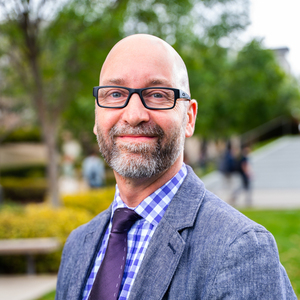My Pilgrim's Progress class is a core curriculum integration seminar in Biola University's Bible and Theology minor. Our goal in this capstone class for Biola’s Bible minor is to encourage students to integrate their accumulated biblical and theological learning with their discipline and vocation. Biola has some integration seminars that are discipline specific — in Art, Psychology, Cinema, Education, for example. There is a Philosophy of Science class that must be fascinating, but alone it cannot accommodate all our STEM students.
Every time I teach my class, therefore, I have students whose academic interests and passions are harder to integrate than others. I do alright with literary, historical, psychological, social, economic, political and theological interests at various points in the class. Chemistry, however, does not get a look in. STEM students will often follow the invitation to be creative outside their disciplines in writing poems, composing songs, creating Bible studies, and the like. And they do really well.
But, among this recent end of semester round of creative projects, William Yujuico's stands out. William was taking organic chemistry this semester and one class in particular proved a catalyst (layman's metaphoric use) for his creative project. When I went to his submission on our Learning Management System I had to laugh. Was this abstract art? What was I to make of this project:
.jpg)
Mercifully, I have students submit a commentary alongside their projects to help me connect their artifact to their learning from the class. I am so grateful for William's ambitious and bold choice. And he did check the chemistry with his prof and reports it accurately here.
The rest of the blog post is over to William, because I could not even begin to describe what he presents visually. Enjoy:
'The type of reaction I chose to convey how I thought of Christian’s journey was an organic chemistry mechanism type of reaction. The burden of sin that I used in my reaction mechanism is a protecting group known as ethylene glycol. Protecting groups get added onto molecules and keep it from reacting. This allows the rest of the molecule to undergo changes while that part remains unchanged, at least until it gets removed. I chose this because I wanted to show the burden getting added onto Christian’s back through the addition of this protecting group shown in steps 1-6.
Much like the way Christian, on his way to the cross, undergoes many changes with encounters of different people at different locations, the base molecule, the original 5 membered ring, undergoes many changes as it reacts with different reagents in steps 7-12. Not only does Christian experience changes in himself, even as he encounters many different people, both positive and negative influences on his journey, his burden remains. For example, his attempt at getting it removed following Mr. Worldly Wiseman’s advice is futile.
It is not until Christian encounters the cross that his burden falls off. In a similar manner, it is not until the molecules react with the right reagent that the protecting group comes off in steps 13-18. Furthermore, the molecule that allows for the protecting group to be initially put on, the H3O+, is the same one that comes back to take the protecting group off. In a similar way, people experience the burden of conviction of sin through the reading in the Bible about God’s condemnation of sin. But it is also through Bible reading and through God in Christ Jesus at the cross that our burdens of sin are removed.' (Quoted with permission, lightly edited.)
This post and other resources are available at Andy Draycott’s Professor Pilgrim’s Progress website.
 Biola University
Biola University.jpg)

.jpg)


